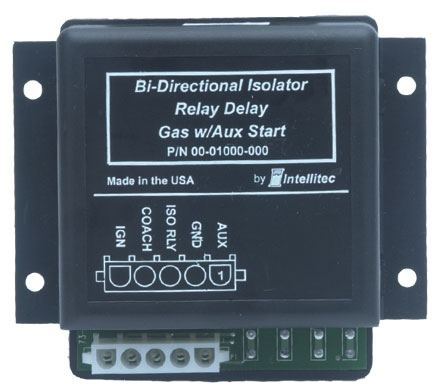



When hooking up to a pedestal, you will find two basic configurations: For all intents and purposes, consider 100 volts, 110 volts, and 120 volts to be the same thing. In the past, power companies sent 100 volts through the lines, but the amount has changed a couple of times over the last century. Sources of RV PowerĪn RV primarily draws its power from AC sources at “120 Volts.” In reality, the 120 Volts is more of a rounded estimate, so you might see a bit of variation in the stated voltages of shoreline power pedestals. That power will run through the RV’s inverter, and the produced 120 Volts of AC power will run whatever you connected to the power outlets: microwave, phone charger, laptop, TV, etc. Otherwise, assuming that the RV is equipped with an inverter, 12 Volts of DC power will be pulled from the house batteries.
1992 ford f53 battery isolator relay generator#
If the RV is connected to shoreline power or a generator is running, the wall outlets will pull the needed AC power from that source. Of course, there are exceptions to every rule, but this is a reliable guideline.Īnything plugged into an outlet will receive the standard 120 Volts of AC that any household outlet would supply. The essential devices pull from those batteries: fridge, slides, water pump, built-in lighting, etc. RVs have house batteries, so DC is the most accessible source of power for an RV. The most observant among you might notice that RV appliances and plumbing are all powered via 12-Volt DC. Provided that there is a sufficient source of electricity, converters and inverters give an RV the flexibility to power all of its devices regardless of the power source, AC or DC.ĭC is for Priorities – AC is for the Extras You can see examples of this by directing your attention to the RV electrical diagram at the top of the page.Īs you know, some devices require AC and some require DC. They do the same thing as converters, but it is reversed. It is just used on an RV-wide scale rather than a single device. This is the same type of device that you will find on computers. This conversion happens through the use of the aptly named converter.

We hook up the DC batteries to the more easily transmitted AC power source, and the AC is converted into DC power. The AC can be transmitted, but it can not be stored in a battery. The specifics of the why aren’t pertinent to the subject of this article, but you can watch this video if you would like to know more. You might be wondering, “If DC is a more stable power source, why don’t we just use it for everything?” The answer is that DC is difficult to transmit over long distances, which is why AC powers the national grid. To make them compatible with AC, many of those systems, such as computers, come equipped with onboard AC to DC converters. For the most part, you can assume that it requires DC if it has a microchip. However, this type of flow isn’t naturally compatible with more complex electrical systems. This behavior causes brief interruptions in power, which isn’t a problem for electronics with simple circuitry. This effect is directly caused by AC power changing directions. Have you ever heard that lightbulbs aren’t a steady source of light? They look steady to the human eye, but in reality, light bulbs rapidly flash like a strobe light. The electrons rapidly flow back-and-forth. We call it alternating current because the flow of the electricity isn’t unidirectional. RVs are powered by two electrical systems, AC and DC.ĪC, also called alternating current, is what typically powers a regular brick-and-mortar home.


 0 kommentar(er)
0 kommentar(er)
